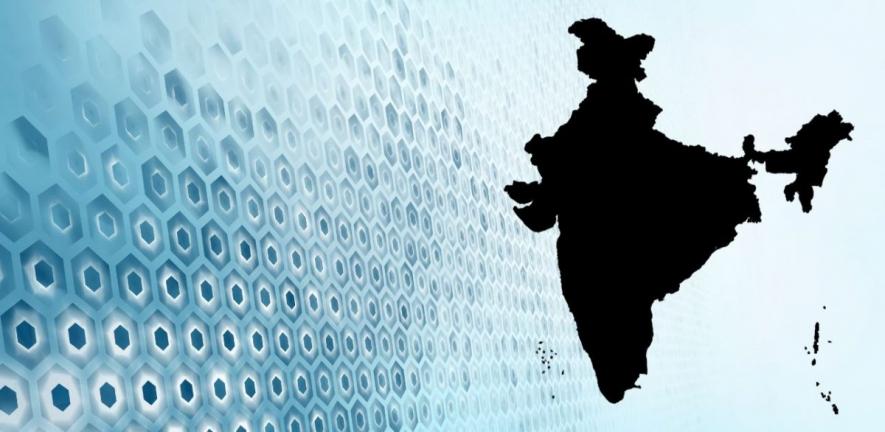Technological Challenges to Becoming a Developed Country by 2047

Representational image
The Prime Minister has set the goal of India becoming a developed country by 2047.
On the way, India’s Gross Domestic Product (GDP) is soon going to surpass that of Germany and Japan, if the current official rates of growth are maintained.
In today’s world, projecting five years or 24 years ahead is fraught with challenges. Who could have foreseen the Covid pandemic in 2020 and the war in Ukraine in 2022?
Successful landing of Chandrayaan 3 near the South Pole of the Moon is undoubtedly a great achievement for the nation. But that does not make India a developed nation.
Major challenges confront the nation, such as providing good education and healthcare. This can only be achieved if the number of schools and health facilities in rural and semi-rural areas is increased substantially.
ISRO’s success also implies that even though we focus on going to the Moon, we neglect day-to-day things that are necessary to become a developed nation— like providing clean drinking water and sanitation to all.
The Indian Space Research Organisation (ISRO)’s success shows that India can achieve much more if it sets its mind to it.
ISRO’s success also implies that even though we focus on going to the Moon, we neglect day-to-day things that are necessary to become a developed nation— like providing clean drinking water and sanitation to all.
Sustaining 6 percent average growth rate
Suppose nothing untoward happens on the road to 2047, our official GDP will keep rising.
Before the pandemic, the official growth rate had dropped sharply from 8 percent to 3.9 percent, for an average of 6 percent.
If the growth rate continues to hover around the 6 percent mark till 2047, India’s GDP will become 4.05 times the current official GDP of US $3.7 trillion, that is, US $15 trillion. Still much behind US and China’s current GDP.
In the meantime, the world’s two largest economies would have continued to grow.
India’s population is expected to reach 1.65 billion by 2047 so the per capita income will become US $9,000 by that year.
The current World Bank benchmark for a high-income country is a per capita income of US $14,000.
So, India will only transit from a lower-middle to an upper-middle income category country. Only if the average rate of growth becomes 8 percent now will the per capita income reach US $14,000 by 2047.
Growing at 6 percent over 24 years will be a challenge— 8 percent appears like a far-fetched dream.
The current high levels of inflation, slow growth of major world economies and supply bottlenecks will be the major impediments in achieving a 6 percent growth rate.
Further, current policies which marginalise the unorganised sector would need to be changed substantially.
A developed country?
Even if India’s per capita income reaches US $14,000 by 2047, would that make India a developed nation?
Oil producing nations such as Kuwait and Brunei have for long enjoyed high per capita incomes. They are characterised as rich but not developed nations.
A developed nation is one that is technologically advanced and is able to move along the technology frontier to stay competitive. It has to be dynamic to take care of its problems and has to be able to compete on equal terms at the global stage.
If the growth rate continues to hover around the 6 percent mark till 2047, India’s GDP will become 4.05 times the current official GDP of US $3.7 trillion, that is, US $15 trillion. Still much behind US and China’s current GDP.
India does not fit that bill, as it is heavily dependent on import of high technology products. Granted it has done better than most developing world nations but it mostly functions with intermediate and low technologies.
Consequently, India mostly exports low value-added items while importing higher value-added items.
The result is a large trade deficit. Countries that possess high technology do not share it. So India has to develop it on its own.
The challenges
Multiple factors underlie technological dynamism.
First, as data from the Annual Status of Education Report (ASER) shows, the quality of school education is not very good. On the other hand, only a few institutions of higher learning are involved in advanced research.
Poor school education results in a weak base which makes students less capable of undertaking advanced research. Sub-standard advanced research means both educators and the knowledge base for school education continue to be of a deficient quality.
Second, given India’s poverty (India is the poorest G20 nation), adequate expenditure on public education is a crucial factor in nurturing talent and for employing talented researchers and teachers.
Third, commitment is crucial for good teaching and research and that to a large extent depends on society’s commitment to promoting knowledge generation.
Fourth, technology itself creates multiple possibilities at the technical and social levels, which makes it impossible to plan the future precisely.
Before 2000, people wrote letters and sent telegrams but that is largely history now. One visited a bank branch for transactions but now they are carried out via the internet and machines, such as ATMs. E-commerce has spread to the detriment of the neighbourhood stores.
As of 2022, ‘large learning models’ are posing an unprecedented challenge.
Large learning models are a fundamental algorithm in generative artificial intelligence that have transformed the artificial intelligence (AI) development landscape, providing developers with unparalleled capabilities in a fraction of the time previously required.
Even those who are at the frontiers of AI are asking for a moratorium on further research because it poses an existential challenge to human kind.
AI, automation and mechanisation are not only posing challenges to semi-skilled jobs such as those of vehicle drivers and workers in business process outsourcing (BPOs) but also to skilled jobs of technicians and army men.
Poor school education results in a weak base which makes students less capable of undertaking advanced research. Sub-standard advanced research means both educators and the knowledge base for school education continue to be of a deficient quality.
It is said that in five years even many skilled jobs such as those of teachers may be impacted by AI.
Imperatives of investment in research and development
Technology development requires investment in research and development (R&D). But it is risky because there is no guarantee of success and there is a chance of obsolescence due to the acceleration of technical change.
So, investors may not be able to recoup the investment made.
For example, data storage has transitioned from five-and-a-quarter inch floppies to three-and-a-half inch ones to compact disks to pen drives to the cloud.
Investment in R&D is even more risky in developing countries. Their R&D efforts may be undermined by import of more advanced technology. This has repeatedly happened in India with nascent R&D nipped in the bud.
For example, Centre for Development of Telematics (C-DOT)’s efforts were undermined by import of the large digital exchanges in the early 1990s.
The role of policy is crucial in promotion of R&D. It can provide a stable environment and public funding. This requires the nation to have a strategic vision that can help identify the sectors to be defended against external pressures and those that can be let go off?
A strategic vision requires a political consensus. In the prevailing environment of cronyism, consensus has proved to be elusive since suspicions run deep.
The vision must take into account the concerns of the marginalised sections that may be adversely impacted by technological changes.
Given the aforementioned factors which create considerable uncertainty and make it difficult to plan, the best one can do is to learn to cope with rapid changes. Everyone needs to be prepared for change.
Society will be required to anticipate the social impact of technical changes through generating new knowledge.
Idea of autonomy
Technology is knowledge. Its advancement requires generation of new knowledge. This happens largely in institutions of higher learning and during production.
Typically, the latter depend on the former to produce new knowledge which can be commercially exploited.
Take, for instance, the development of vaccines against coronavirus or of advanced semiconductor components for faster computers and mobile phones.
Even those who are at the frontiers of AI are asking for a moratorium on further research because it poses an existential challenge to human kind.
So, society needs to create an environment for innovation and new knowledge generation.
This can only happen when researchers are given freedom to generate new ideas, that is, autonomy to pursue ideas, even if they fail.
The success of Chandrayaan 3 was based on the learning from the failure of Chandrayaan 2.
Truncation of autonomy through bureaucratic control frustrates researchers and kills their initiative. When that happens, work is done mechanically, which undermines creation of new knowledge.
Unfortunately, few institutions of higher learning and research provide teachers and researchers with the autonomy they need.
Various committees that have proposed reforms in higher education have treated autonomy as a slogan to be bandied while actually their proposals would result in greater bureaucratisation of the institutions which would undermine autonomy.
So, India may do well in select areas, like space exploration, but not in general, and that makes the task of becoming a developed country difficult even with a higher per capita income.
Investment in R&D is even more risky in developing countries. Their R&D efforts may be undermined by import of more advanced technology. This has repeatedly happened in India with nascent R&D nipped in the bud.
Ideas based on the author’s books: Indian Economy since Independence: Persisting Colonial Disruption, 2013 and Indian Economy’s Greatest Crisis: Impact of Coronavirus and the Road Ahead, 2020.
Arun Kumar is a Retired Professor of Economics at the Jawaharlal Nehru University. He is the author of `Demonetization and Black Economy’ (2018, Penguin Random House). He blogs at http://arunkumarjnu.blogspot.com/. The views expressed are personal.
Get the latest reports & analysis with people's perspective on Protests, movements & deep analytical videos, discussions of the current affairs in your Telegram app. Subscribe to NewsClick's Telegram channel & get Real-Time updates on stories, as they get published on our website.
























